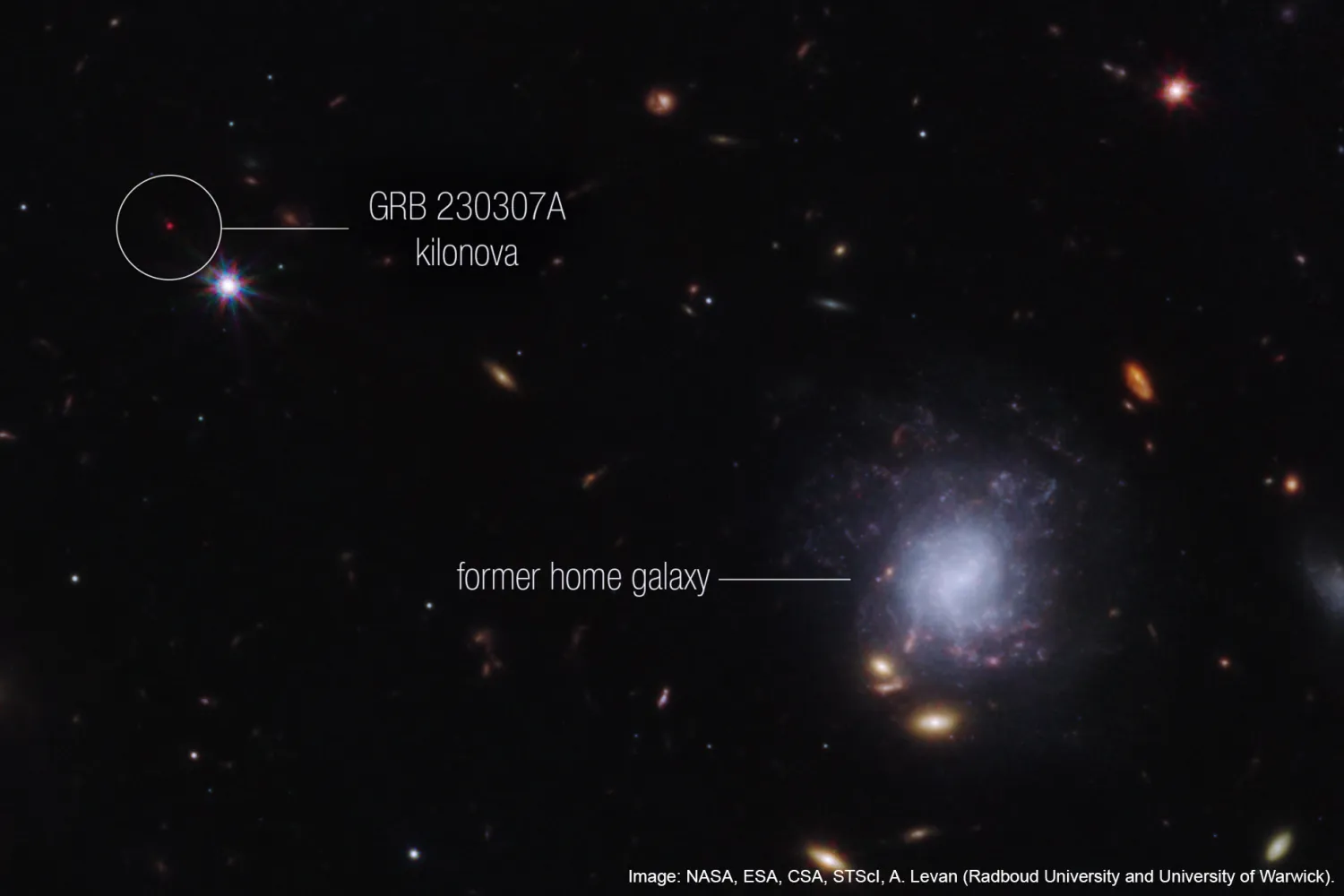Breadcrumb
Stephen Smartt confirms source of intense gamma ray burst
Christ Church’s Professor Stephen Smartt has played a critical role in pinpointing the neutron star merger responsible for a remarkably bright gamma ray burst and in evidencing the formation of a heavy element in the merger. The exciting findings from Professor Smartt and a global team of researchers have been published in Nature.
Neutron stars are the densest objects that astronomers can observe directly, being formed when massive stars run out of fuel and collapse. When a neutron star merges with a black hole or with another neutron star, it gives rise to an explosion called a 'kilonova' – so called because its brightness is about 1,000 times that of a nova.
Kilonovae are exceptionally rare and difficult to observe directly. However, astronomers can infer the occurrence of such events from one of their by-products: intense bursts of gamma radiation. So when in March NASA’s Fermi Gamma ray Space Telescope detected the second-brightest gamma ray burst observed in more than 50 years, an international team of scientists including University of Oxford researchers set about to determine whether it could be attributed to one such kilonova episode.
After initial readings showed the burst to be around 1,000 times as bright as ordinary gamma ray bursts, ground-based telescopes raced to locate the source of the radiation on the sky and to measure how its brightness evolved. Observations from different parts of the electromagnetic spectrum found that the optical and infrared radiation was relatively faint and quickly transitioned from blue to red – characteristic of a kilonova.

Most infrared light does not pass through the earth's atmosphere and it is only recently that the James Webb Space Telescope’s NIRCam (Near-Infrared Camera) and NIRSpec (Near-Infrared Spectrograph) instruments have made it possible to observe the increasingly red radiation emitted by the cooling cloud of material that is produced in kilonova explosions. Professor Smartt compared the infrared emission spectra from the suspected kilonova to that of the only previously observed kilonova that was detected through gravitational wave experiments. He was thus able to confirm that the extraordinary gamma ray burst did indeed come from a kilonova.
As Professor Smartt explained, 'The data showed a strong excess of infrared emission around 2.2 microns, very similar to that observed in the kilonova that was produced with the gravitational wave source GW170817. The similarity of the spectra and the quick fade convinced us the kilonova explanation is the most likely.'
A particularly exciting finding of the team of astronomers' research is that the detected merger of neutron stars produced the chemical element tellurium – a heavy element that is rarer than gold or platinum in the earth's crust. The spectrum from the March kilonova recorded by the James Webb Space Telescope clearly showed light emitted by tellurium, supporting the long-theorised claim that that neutron star mergers serve as "pressure cookers" creating rare elements much heavier than iron.
The study from the team including Professor Smartt, ‘Heavy element production in a compact object merger observed by JWST’, has been published in Nature. The research supports one explanation for the existence of particularly rare and heavy elements, and will undoubtedly be a catalyst for further research. Professor Smart looked to the future: 'This study has set a precedent for detecting neutron star mergers using gamma ray bursts, and the next stage is to find more of these events, and determine if they are primarily responsible for the existence of the elements heavier than iron.'
Professor Stephen Smartt CBE FRS MRIA is Wetton Professor of Astrophysics at the University of Oxford. Learn more about him and his research on his Christ Church profile.
Other Christ Church news



